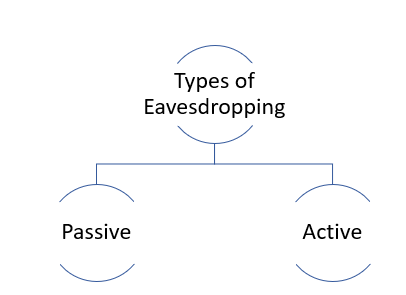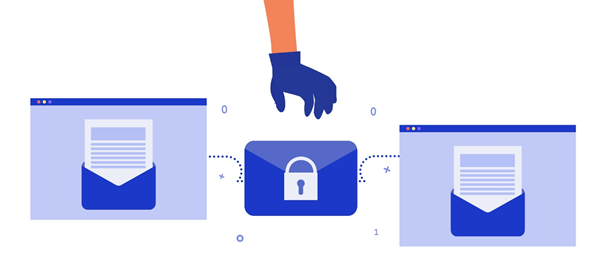What is an eavesdropping attack?
An eavesdropping attack is a theft of information when it is shared over a smartphone, computer, or any other connected device. An eavesdropping attack is also termed a snooping attack or sniffing.
The attackers are able to steal the data when the network of communication is not secured and when the data is either received or sent by the user.
The purpose of the attackers is to gain access to the business-related information or the financial information about the user and afterwards sell this information. Spouseware is also a criminal activity in which people eavesdrop on their family and friends by tracking their phones. Spouseware has become a booming trade.
It will be difficult to detect the eavesdropping attack as the attack might have taken place and the operations will be normal for the users.
An eavesdropping attack will only be successful when the connection between two people is weak, or the server used for communication is not secure. The attacker can install software into the system of the victim, and afterwards, the data transmitted is stolen. When the network between the receiving or transmitting device is weak, the eavesdropping attack becomes easy.
Summary
- An eavesdropping attack is a theft of information when it is shared over a smartphone, computer, or any other connected device.
- The attackers can steal the data when the network of communication is not secured and when the data is either received or sent by the user.
- The purpose of the attackers is to gain access to the business-related information or the financial information about the user and afterwards sell this information.
- An eavesdropping attack will only be successful when the connection between two people is weak, or the server used for communication is weak.
Frequently Asked Questions (FAQs)
What are the types of eavesdropping attack?
The eavesdropping attack can be categorised into two types, namely, active and passive eavesdropping attacks.
- Passive eavesdropping attack – In this attack, the hacker can only listen to data that is transmitted through the unprotected network.
- Active eavesdropping attack – Here, the hackers disguise themselves as users and gain access to the websites where the user might be sharing their private or financial data.

How do eavesdropping attacks happen?
The eavesdroppers always evolve their techniques to gain access to a system. Moreover, eavesdropping is evolving as an ethical hacking practice now a days. The techniques of eavesdropping are changing with the change in the medium of information exchange, for example, everything is becoming digital, from the payment for a biscuit to high-level investments. The most popular technique to eavesdrop is VoIP (Voice over Internet Protocol), VoIPs are constructed by employing IP based communication. The communication through these platforms can be recorded using a protocol analyser and afterwards can be converted into audio files.

Image Source: © Rogistok | Megapixl.com
Another popular eavesdropping method is data sniffing. This technique is used when the network uses HUB. HUB is generally used in the local network. This method has gained popularity as it adds ease for the sniffer because all the communicated data is sent to all network ports. The network ports in the local network accept all the data even if they are not the intended recipients of the data. Data sniffing can also take place through wireless communication if the data is broadcasted to all the network ports which are not secured.
Wireshark’s sniffing program is an eavesdropping attack that causes issues for smartphone users majorly. To execute the attack, authentication tokens are sent to the unencrypted networks. With the tokens, the hacker can gain access to all the provided data. The attack includes stealing data, listening to the data, and manipulating or modifying the data.
There are many eavesdropping attacks that are complicated to execute in which spyware or malware is installed in the systems of the targeted person. The installation is done under the pretext of social engineering. With the success in installation, spying becomes very easy.
Eavesdropping can be avoided by those aware of hacking and related aspects. In case of businesses, it is important to protect the data to avoid complications at a later stage. An organisation can protect itself by training its employees in the field of social engineering and ethical hacking.

Image source: © Yuliana92 | Megapixl.com
How to prevent eavesdropping attack?
It is necessary to follow some basic steps to avoid eavesdropping. The eavesdropper constantly develops new methods to hack a system, and therefore the cybersecurity experts also have to look for new techniques to safeguard data.
There are some methods that are recommended by ethical hackers to protect data from eavesdropping.
- Network security improvement – The network security infrastructure created by the cybersecurity officials should be effective in avoiding all type of eavesdropping activities. Strong network security allows the IT infrastructure to protect the data from hackers. The external and internal systems become immune to eavesdropping. Moreover, the employment of antivirus softwares and firewalls lead to a safe exchange of important information between the parties.
- Encryption – It is a tool that should be owned by a cybersecurity official or expert. Encryption stands for the data scrambling before sending it to the concerned parties. If any third party views the data during the transmission, they are not able to understand the information. The receiver will own an encryption key and by using the key they will be able to decrypt the message and obtain it in a readable form.

Image source: © Sentavio | Megapixl.com
- Digital literacy – Apart from the strong network security and the encryption key, it is strongly recommended to the organisation, to train their employees in terms of digital safety. Digital literacy should not be limited to IT teams. The employees who are engaged in the third - party communication, should be trained in all the eavesdropping related measures. Any compromise at different levels can result in financial losses and loss of market reputation. Moreover, there are different certification courses that can be undertaken by the employees to learn about eavesdropping.
 Please wait processing your request...
Please wait processing your request...